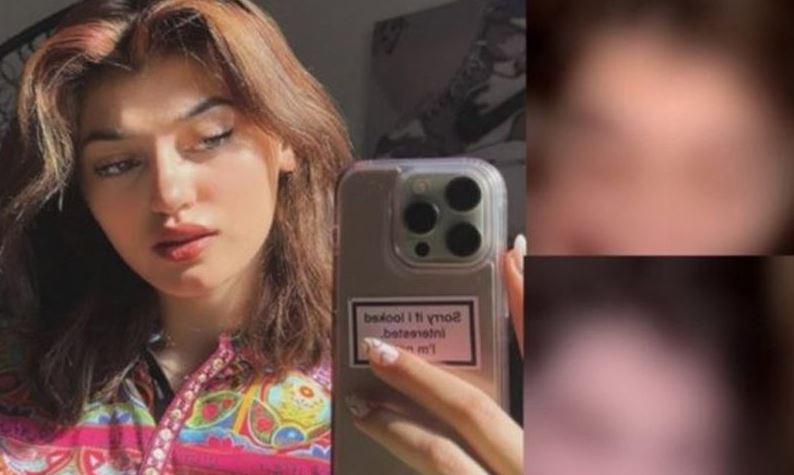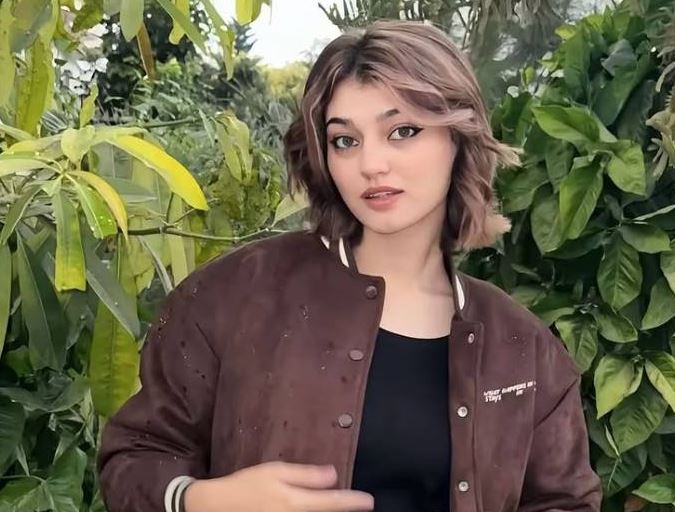The Narrative Of Imsha Rehman The Magic Of Viral Videos
In the age of digital media, viral videos have become a powerful force in shaping trends, influencing opinions, and even launching careers. The phenomenon of videos spreading rapidly across social media platforms has revolutionized content consumption and marketing. Whether it’s a funny clip, an emotional story, or a controversial moment, viral videos have an undeniable impact on how people interact with digital content.
The magic of viral videos lies in their ability to capture people’s attention instantly and compel them to share. Unlike traditional media, where content is carefully curated and distributed, viral videos often emerge spontaneously and gain traction through organic engagement. The key elements that make a video go viral include relatability, emotional appeal, humor, and shareability. When these factors align, a video can reach millions of viewers within hours or days.
One of the most fascinating aspects of viral videos is their unpredictability. While some content creators spend years trying to crack the code of virality, others achieve overnight success with a single, unexpected clip. This unpredictability is what makes viral videos so captivating. No formula guarantees success, yet certain patterns and trends can be observed.
In this article, we will explore the various aspects of viral videos, from their defining characteristics to the psychological factors behind their success. We will analyze case studies of some of the most famous viral videos, examine the role of social media platforms in their spread, and discuss their broader impact on society and culture. Finally, we will provide strategies for those looking to create their own viral content.
Viral videos are more than just entertainment—they shape public discourse, influence consumer behavior, and even serve as powerful tools for activism. As digital platforms continue to evolve, understanding the dynamics of viral content will become increasingly valuable for content creators, marketers, and everyday users alike.
Defining Viral Videos
A viral video is a piece of digital content that spreads rapidly across the internet, often through social media, gaining a massive audience within a short period. These videos can range from humorous clips and emotional storytelling to shocking revelations and informative content. What sets viral videos apart from regular content is their ability to capture people’s attention and encourage widespread sharing.
The key characteristic of a viral video is its exponential growth in views, shares, and engagement. While traditional media relies on scheduled broadcasts and structured distribution channels, viral videos spread organically through user interactions. A video that starts with just a few hundred views can quickly gain millions if it resonates with the audience.
@nuktapakistan Famous Pakistani TikToker Imsha Rehman’s video leak scandal case took a dramatic turn on Thursday at a local court in Islamabad when her lawyer didn’t oppose the bail of accused in the courtroom. He told the judge that my client (Imsha Rehman) had pardoned the accused for the sake of God (Fisabillillah). The Court allowed Bail of accused and ordered for his release. #nukta #nuktapakistan #FIA #imsharehman #AIgenerated #fakevideos #socialmedia #viral #courtdecision
Several factors contribute to a video going viral. First, emotional appeal plays a crucial role. Videos that evoke strong emotions—whether joy, sadness, surprise, or anger—are more likely to be shared. People connect with content that makes them feel something, and they naturally want to share those feelings with others.
Second, relatability is another major factor. Videos that reflect common human experiences or address universal themes tend to perform well. When viewers see something that mirrors their own lives, they are more likely to engage with and share the content.
Another important aspect is humor. Funny videos often have high shareability because laughter is a universal experience. A well-executed joke, an unexpected twist, or an amusing situation can make a video highly engaging.
Additionally, the length and format of the video matter. Short, concise, and visually engaging videos tend to perform better. In today’s fast-paced digital environment, people have short attention spans, and content that delivers its message quickly is more likely to succeed.
Lastly, the platform on which the video is shared plays a significant role. Different social media platforms have unique algorithms and user behaviors that affect how content spreads. Understanding these dynamics can help content creators optimize their videos for maximum reach.
Psychological Factors Behind Virality
The psychology behind viral videos is a fascinating study of human behavior and social interaction. At its core, virality is driven by psychological triggers that influence people’s decisions to engage with and share content.
One of the strongest psychological factors is the emotional impact of a video. Studies have shown that content that evokes strong emotions—whether positive or negative—is more likely to be shared. Joy, surprise, admiration, and anger are among the top emotions that drive virality. For example, heartwarming stories of kindness or videos that expose injustices often gain widespread attention because they tap into deep emotional responses.
Another critical factor is the concept of social currency. People like to share content that makes them look good or feel smart. If a video contains valuable information, an interesting fact, or a humorous perspective, viewers are more likely to pass it along to their friends. This desire to be seen as knowledgeable or entertaining fuels the spread of viral content.
The element of surprise also plays a significant role in virality. When a video includes an unexpected twist or a unique concept, it captures viewers’ attention and encourages them to share. Humans are naturally drawn to novelty, and surprising content satisfies this psychological craving.
Additionally, people are more likely to share content that aligns with their identity or beliefs. Social media serves as a platform for self-expression, and sharing videos is a way for users to communicate their values, interests, and personalities. For instance, a video promoting environmental awareness might go viral among users passionate about sustainability.
Lastly, the principle of reciprocity influences viral sharing. When people receive content that entertains, educates, or inspires them, they feel compelled to return the favor by sharing it with others. This cycle of giving and receiving content fuels the rapid spread of viral videos.
Understanding these psychological drivers can help content creators craft videos that resonate deeply with audiences and maximize their chances of going viral.
Case Studies of Successful Viral Videos
Examining real-life examples of viral videos provides valuable insights into what makes content widely shareable. Throughout the years, several videos have captivated global audiences, gaining millions—even billions—of views. Below are some of the most notable viral videos and the reasons behind their success.
One of the earliest examples of a viral video is the “Charlie Bit My Finger” video, uploaded to YouTube in 2007. The simple home video, featuring a young boy playfully biting his older brother’s finger, gained over 880 million views before being sold as an NFT in 2021. Its success can be attributed to its relatability, humor, and authenticity. Viewers found it endearing and instantly shareable, making it one of YouTube’s most iconic viral clips.
Another powerful example is the “Gangnam Style” music video by South Korean singer Psy. Released in 2012, the song’s catchy beat, humorous dance moves, and vibrant visuals propelled it to global fame. It became the first YouTube video to reach one billion views and set a precedent for how music videos could leverage internet culture to achieve worldwide popularity. The video’s viral success was fueled by its uniqueness and the ease with which people could mimic and share the dance.
In contrast, some viral videos gain traction due to their emotional impact. The “Dove Real Beauty Sketches” campaign, released in 2013, is a prime example. In the video, an artist sketches women based on their self-descriptions and then redraws them based on descriptions given by strangers. The results highlighted how women often perceive themselves more negatively than others do. The video resonated deeply with audiences, leading to widespread discussion on self-esteem and beauty standards.
Another emotional viral video is the “Chewbacca Mom” clip from 2016. A woman named Candace Payne posted a Facebook Live video of herself joyfully laughing while trying on a Chewbacca mask. Her genuine happiness was contagious, leading to over 200 million views and turning her into an internet sensation. The video demonstrated how authenticity and joy could drive virality.
These case studies reveal common themes: humor, relatability, emotional impact, and uniqueness. Whether through comedy, music, or heartfelt messages, successful viral videos tap into universal human experiences, making them irresistible for audiences to watch and share.
The Role of Social Media Platforms
Social media platforms are the driving force behind viral videos, providing the infrastructure for content to spread rapidly. Each platform has its own algorithms, user behaviors, and content formats that influence how videos go viral. Understanding the role of these platforms is crucial for content creators seeking to maximize their reach.
YouTube, as the world’s largest video-sharing platform, plays a significant role in virality. Its algorithm promotes videos based on watch time, engagement, and relevance. Many viral sensations, including music videos, vlogs, and challenge-based content, originate from YouTube. Features like recommendations, trending pages, and autoplay contribute to the rapid spread of popular videos.
Facebook has also been instrumental in viral video distribution. With its autoplay feature and emphasis on shareable content, Facebook encourages users to engage with and spread videos quickly. Videos that spark discussions, inspire emotions, or have strong social messages often gain significant traction. The “Chewbacca Mom” video, for instance, went viral primarily due to Facebook’s sharing dynamics.
TikTok has revolutionized the concept of viral videos by making short-form content the centerpiece of its platform. The app’s “For You” page uses a powerful recommendation algorithm that exposes videos to a wide audience based on user interactions. Trends, challenges, and duets further amplify virality, as users actively participate in and remix existing content. Many modern viral videos, such as dance challenges and comedy skits, originate from TikTok.
Twitter, with its fast-paced, text-and-video hybrid format, excels in spreading viral clips, especially those related to news, entertainment, and memes. Retweets and quote tweets help videos circulate rapidly, often reaching mainstream media. Short, impactful clips—such as funny moments, breaking news, or powerful speeches—tend to gain the most traction.
Instagram, with its Reels and Stories features, has become another hub for viral content. The platform’s visual-centric nature and influencer-driven culture contribute to the widespread sharing of videos. Hashtags and explore pages further enhance discoverability.
Ultimately, social media platforms function as the engines that drive viral videos. Understanding their algorithms, engagement tactics, and content preferences allows creators to optimize their videos for maximum visibility and impact.
Impacts of Viral Videos on Society and Culture
Viral videos are more than just fleeting internet trends—they have significant cultural, social, and even political impacts. Their ability to reach millions in a short period makes them powerful tools for shaping public discourse, influencing consumer behavior, and even sparking movements.
One major impact of viral videos is their role in shaping pop culture. Many internet challenges, dance trends, and catchphrases originate from viral videos. For example, the “Harlem Shake” trend in 2013 saw thousands of people creating their own versions of a chaotic dance routine. Similarly, the “Ice Bucket Challenge” raised global awareness and millions of dollars for ALS research through viral participation.
Viral videos also play a crucial role in raising social awareness. Videos capturing acts of kindness, injustice, or activism often spark widespread discussions. For instance, the viral video of George Floyd’s arrest in 2020 led to global protests against police brutality and became a catalyst for the Black Lives Matter movement. Similarly, videos highlighting environmental issues, such as plastic pollution in oceans, have driven conversations about sustainability.
On a more personal level, viral videos can turn ordinary individuals into celebrities overnight. Internet personalities, influencers, and even regular people have gained fame through viral moments. However, this sudden exposure can have both positive and negative consequences, as public scrutiny and online criticism often accompany viral fame.
Additionally, viral videos have transformed marketing and advertising. Brands now leverage viral content to promote products, often collaborating with influencers or creating shareable ads. The success of campaigns like “Old Spice: The Man Your Man Could Smell Like” demonstrates how businesses harness virality to connect with audiences.

While viral videos can bring positive change, they also have downsides. Misinformation and hoaxes can spread rapidly, misleading audiences before fact-checking can occur. The rise of deepfake videos further complicates this issue, raising concerns about digital authenticity.
Overall, viral videos have a profound impact on modern society, shaping conversations, behaviors, and cultural trends in ways that were unimaginable just a few decades ago.
For content creators seeking to make a video go viral, there is no guaranteed formula, but certain strategies increase the chances of success. By understanding audience psychology, platform dynamics, and content optimization, creators can craft videos with high shareability potential.
First and foremost, emotional connection is key. Videos that evoke strong emotions—whether joy, surprise, awe, or even outrage—are more likely to be shared. Tapping into human experiences and storytelling makes content more relatable and engaging.
Secondly, videos should be short, engaging, and attention-grabbing. With decreasing attention spans, the first few seconds of a video are crucial. A strong hook—an intriguing question, a surprising statement, or an engaging visual—can keep viewers watching.
Another strategy is leveraging trends. Keeping up with viral challenges, memes, and cultural moments increases the chances of visibility. TikTok, in particular, thrives on trend-based content, where creators participate in viral sounds, dances, and formats.
Collaboration also boosts virality. Partnering with influencers or other creators expands reach and increases engagement. Many successful viral videos involve duets, reactions, or collaborations between popular content creators.
Optimizing for platform algorithms is essential. Understanding how different social media platforms promote content allows creators to tailor their videos accordingly. Hashtags, captions, keywords, and posting times all play a role in discoverability.
Finally, encouraging audience participation can drive virality. Videos that invite viewers to engage—through challenges, calls to action, or interactive elements—are more likely to be shared and replicated.
While virality can never be fully controlled, applying these strategies increases the likelihood of creating content that resonates with audiences and spreads organically.
EN -Robert Dwyer Video Finding The Strength In Visual Storytelling
The Rise Of The Funky Town Video A Cultural Phenomenon
Unpacking The Viral Sensation Miss Kittys Journey And Her Impact On Social Media
The Heartwarming Story Behind Terlanjur Indah A Glimpse Into Lifes Beauty
Melissa Mercado Video Leaked Poldance
Miss Kittys Viral Phenomenon Unpacking The Impact Of Setelah Bu Guru Salsa
Pwi Pusat Drops Raja Isyam Doni And Anthony From Official Website



 | Sitemap | Mail
| Sitemap | Mail